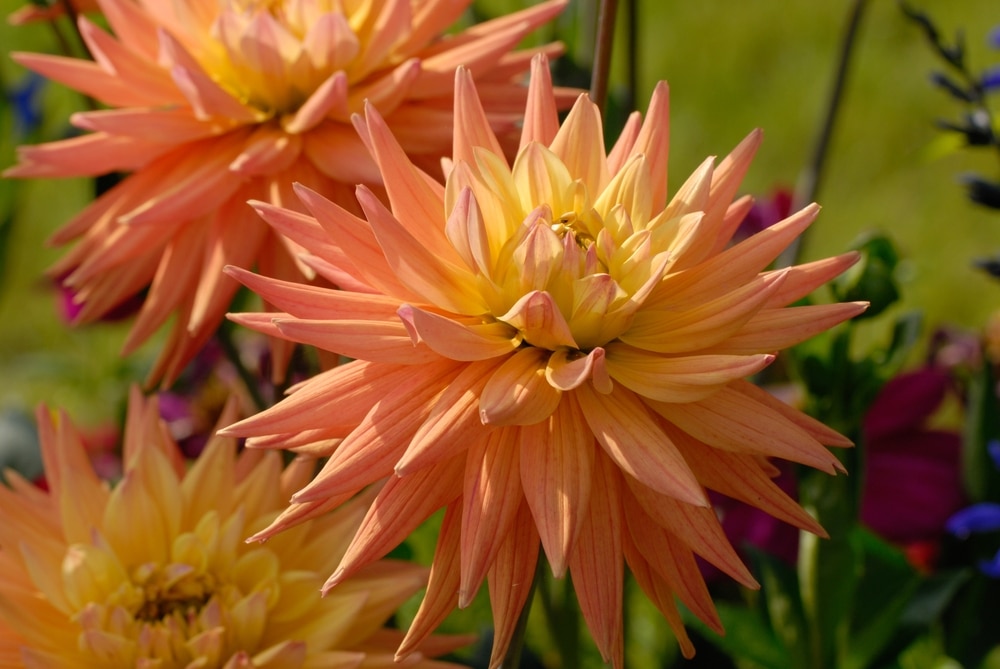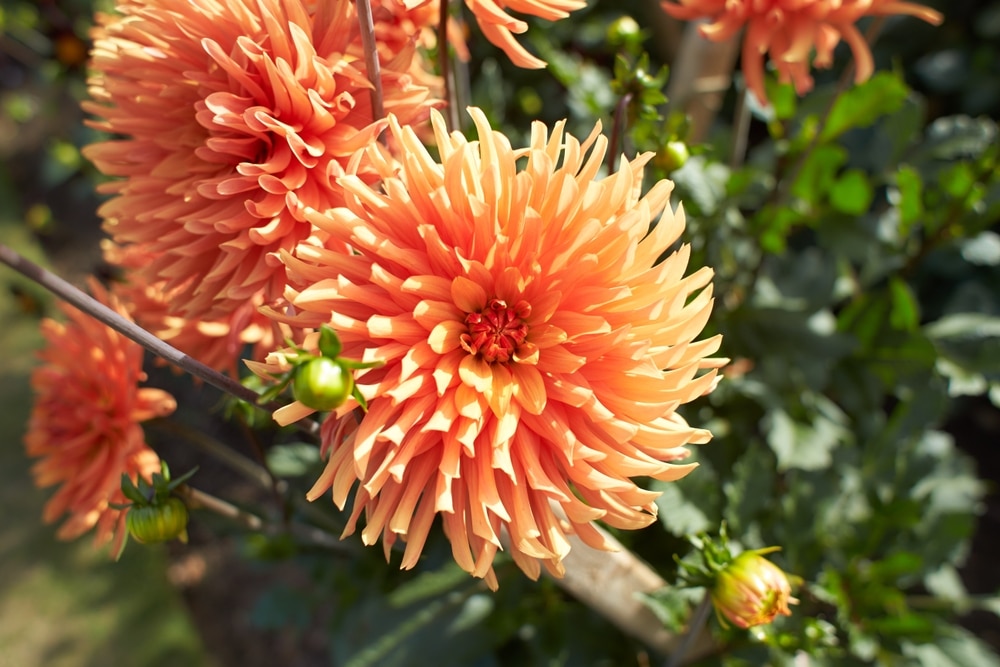Dahlias are lovely flowering plants with showy blooms that can light up your garden. Dahlia ‘just peachy’ is a cultivar with a delicate yellow center that bleeds into soft, peachy pink and light fuschia at the edge of the petals. This guide will tell you everything you need to know about growing just peachy dahlias so they can thrive in your garden.
| Botanical Name | Asteraceae dahlia |
| Common Name | Dahlia ‘just peachy’ |
| Plant Type | Perennial |
| Flower Color | Pink, light blend |
| Size When Mature | 48 Inches |
| Bloom Time | Summer, early fall |
| Sun Requirements | Full sun |
| USDA Hardiness Zones | 8 – 11 |
| Soil PH Range | 5.0 – 7.0 (acid – neutral) |
| Soil Type | Rich, free-draining |
| Water Needs | High |
| Native Area | Mexico and Central America |
What You Need To Know About Just Peachy Dahlias
The dahlia ‘just peachy’ plant can grow up to six feet tall and three feet wide. The blooms can be anywhere between four and six inches wide. ‘Just peachy’ is a semi-cactus dahlia variety, meaning some of the petals will roll to create a spiky appearance.
The colorful flowers attract plenty of bees, butterflies, and birds to your garden. They’re a great option for pollinator gardens that support the health and growth of local pollinator species. As an added bonus, dahlia ‘just peachy’ will repel deer that might terrorize your other crops.
The best time to plant the tubers that produce these dramatic blooms is in spring, from March to May. They’ll start blooming from the middle of summer until the middle of fall, or from June to November.
How To Care for Just Peachy Dahlias
Here’s everything you need to know about growing and caring for a thriving just peachy dahlia.
Light
A just peachy dahlia ’ requires full sunlight to flourish. Plant them in sunny spots with at least 6 hours of direct sun.
Water and Soil Needs
The best soil for just peachy dahlias’ is fertile and free-draining. It can tolerate acidic to neutral soil with a pH between 5.0 and 7.0. In general, dahlias tend to be hungry and thirsty.
They’ll do best when watered regularly, especially during the dry parts of the year. When grown in a container they’ll need at least three gallons of soil.
Temperature Requirements
Dahlias are not frost-hardy plants. They’ll thrive in hardiness zones 8 to 11, where the average temperature during the growing season is 68 to 72 degrees Fahrenheit. Temperatures below 55 degrees and above 80 degrees Fahrenheit will stress the plant.
Fertilizer
Use a liquid fertilizer regularly during the growing season to ensure your dahlia plant is adequately nourished.
Common Diseases
Fungi, viruses, and insect pests can injure your dahlia plants. Some of the problems to watch out for include:
- Powdery mildew, caused by the Erysiphe fungus
- Wilt, caused by the Fusarium and Verticillium fungi
- Botrytis blight, caused by the Botrytis cinerea fungus
- Impatiens necrotic spot
- Foliar nematodes
- Asiatic garden beetles
- Cyclamen mites
- European corn borers
- Giant hornets
- Plant bugs
- Potato leafhoppers
- Stalk borers
Just Peachy Dahlia Propagation
The easiest way to propagate just peachy dahlias is by dividing the tubers. This method produces plants that are identical to the parent. You can divide the tubers in mid-spring using a clean and sharp knife.
Make sure that every divided tuber has at least one eye intact. Coat the cut surfaces with sulfur powder to prevent fungal growth and then plant the tubers at a depth greater than four inches.
Another way to propagate this flower is by taking cuttings between late winter and early spring. At this point in the year, the tubers will have started sprouting. You can take this as a cutting as long as you leave a node intact for growth to continue.
After removing the lower leaves, dip the cutting in rooting powder and plant in loamy potting soil. Keep the cutting moist and out of direct sunlight until they are rooted and ready for planting.

